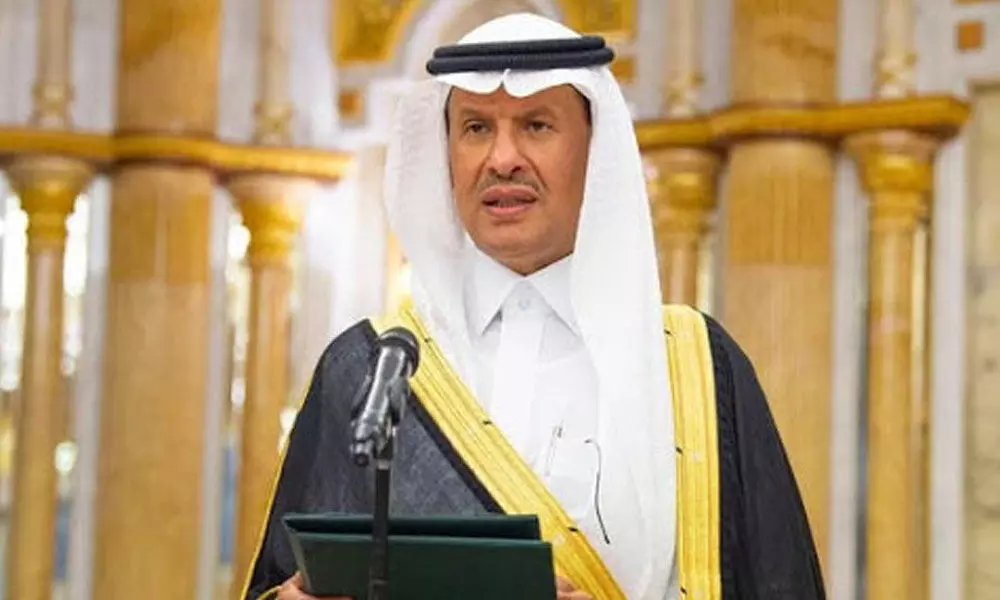The real price of Saudi Arabia's surprise oil cuts
The kingdom would cut its own production by 1 mn barrels a day, or 12% to 8.12 mn barrels a day in Feb and March
image for illustrative purpose

Saudi Arabia's $3 billion insurance premium to protect against falling oil prices will end up being a lot smaller than it seems at first sight. That holds even if demand turns out to be stronger than the kingdom seems to fear.
This week's OPEC+ meeting of oil producers broke up in disarray on Monday night, with Russia pressing for output targets to be raised by 500,000 barrels a day in February. Most other members wanted to leave them unchanged as the coronavirus continues to roil global economies and the recovery in demand remains fragile.
Saudi Arabia appeared particularly worried. In his opening remarks, the country's Oil Minister warned repeatedly against squandering gains made by the group's hard-won sacrifices last year for "an immediate, but illusory, benefit." He went so far as to suggest it was even necessary to reverse the output increase that had just come into effect.
And yet, in the end, the collective responsibility previously demanded by the Saudis was jettisoned and everyone got what they were asking for. The output targets for most countries will remain unchanged in February and March. Russia and Kazakhstan can proceed with the increases they wanted, albeit spread over two months. And Saudi Arabia will make its cut - and then some.
Big cut
Saudi Energy Minister Prince Abdulaziz Bin Salman was visibly gleeful as he revealed that the kingdom would cut its own production by 1 million barrels a day, or 12 per cent, to 8.12 million barrels a day in both February and March. But he seemed as excited by the fact that he'd managed to keep the decision a secret, not just from the press but incredibly from almost all the other ministers too.
It seems that Russia's Alexander Novak was the only one trusted enough to be told about the decision in advance, and he warned the prince against the action. After all, such a move would lift prices and throw a lifeline to the producer group's competitors. Russia is wary of losing market share to others outside the OPEC+ group, such as the US shale sector, who refused to join the output-cutting party, but have had to slash production in response to the collapse in prices.
The Saudis are clearly very worried about the potential impact on oil prices of another demand collapse in response to the current wave of national lockdowns in consuming countries. And so, rather than try to bend everyone to its will as it's done in the past, the kingdom turned its back on the group and decided to go it alone, a decision that came from Crown Prince Mohammed Bin Salman, the country's de facto leader and the energy minister's brother.
What's the cost of this output cut? Forgoing 1 million barrels a day of production for the 59 days of February and March would cost $3 billion with crude at $51 a barrel, where it was before the prince's big reveal. However several factors will reduce that bill.
First, there's the savings on production costs. Saudi Aramco pegged those at $2.80 a barrel in the 2019 prospectus for its initial share sale. If we round that to $3 to allow for inflation, the country would save $177 million over the two months by pumping less.
Next, there's the effect of domestic consumption. Helpfully, the first quarter is the low point, with usage typically down by about 140,000 barrels a day from the previous quarter. So while production may be cut by 1 million barrels a day, exports may only fall by 860,000 barrels; less if they take oil out of storage tanks.
Surprise!
And then there's the biggest saving - the output cut's impact on oil prices themselves. Just announcing the cut has given Brent crude a leg up to almost $54 a barrel. Future prices have also risen, with the nearest months up by just under $3 a barrel since Monday.
That's not yet enough of a rise to fully offset the effect on revenues of lower volumes, but it's a big step in the right direction. Here's what the numbers look like: Between August and October, the most recent month for which official data are available through the Joint Organisations Data Initiative, Saudi Arabia exported 7.17 million barrels a day of crude and refined products. That would be worth $21.6 billion over 59 days at $51 a barrel. The output cut would reduce that export flow to 6.29 million barrels a day, worth $18.9 billion at $51 a barrel, or $20 billion at $54 a barrel.
Reduced premium
That reduces the cost of Saudi Arabia's insurance premium from the headline $3 billion to just $1.47 billion. Add in the savings on production costs and it's down to $1.29 billion. Each extra dollar on the average oil price over February and March would save the kingdom a further $372 million dollars. Saudi Arabia's protection against another demand slump might not be cost-free, but it's going to be a lot cheaper than the sticker price suggests and a small price to pay for some peace of mind. (Bloomberg)

